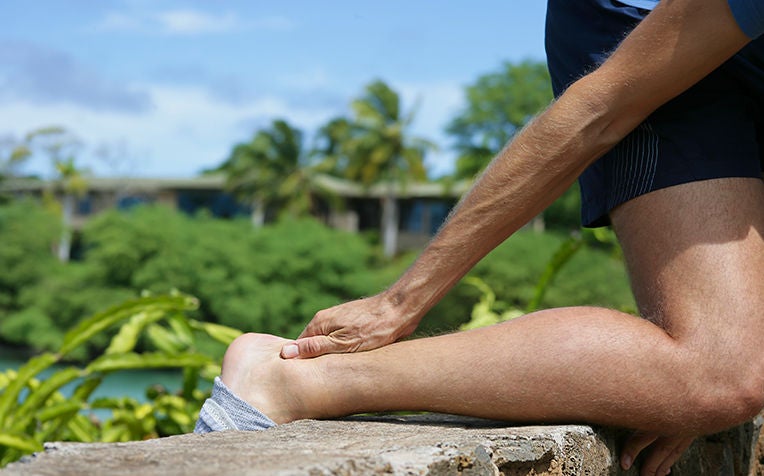
Achilles tendinopathy (or Achilles tendon pain) often causes pain in the back of the heel or the region of the Achilles tendon.
The term 'Achilles tendonitis' is commonly used, which suggests there is some swelling in the Achilles tendon itself.
However, recent research studies report that inflammation may not be present in the tendon itself. The inflamed condition may arise due to an unsuccessful healing response in the tendon. Hence, the term tendinopathy is considered to be more appropriate.
Symptoms of Achilles tendinopathy (Achilles tendon pain)
Pain in the Achilles tendon region may vary with different people. For some, the pain may limit their participation in daily activities. Others may be able to continue with their activities but report latent pain (pain that occurs after exercise or movement or even the next day) instead. You may feel a combination of the following symptoms:
- Pain or tender to the touch over the back of the heel or the region of the Achilles tendon.
- Morning or general stiffness at the back of leg or calf region after lying, sitting or standing for a prolonged period. This may ease off after walking for a few steps or in some cases, walking a longer distance.
Causes of Achilles tendinopathy (Achilles tendon pain)
The exact cause of Achilles tendinopathy is unclear but there are many factors that can lead to Achilles tendinopathy:
- When the tendon is unable to adapt to the load being placed upon it. A sudden overload (e.g. increase in training mileage) may result in microtrauma (tiny injuries) in the tendon.
- Underloading the tendon for a prolonged period may also degrade the quality of the tendon (e.g. abruptly stopping previous daily runs). The tendon may become weak around the area of injury and swelling (due to inflammation occurring in the surrounding structures e.g. bursa ) may or may not be present around the back of the ankle region.
Some factors that can increase the risk of strain placed on the tendon are:
- Advancing age
- Increased bodyweight
- Other medical conditions e.g. diabetes mellitus, arthritic conditions
- Poor ankle and foot range, tight or weak calf muscles, poor ankle stability or weak hip/knee musculature
- Previous injuries
- Foot types – flat foot or high arch foot
- Genetic predisposition
Changes in your training regime may also contribute to the stress or underload of the Achilles tendon. These factors include:
- Type of footwear: Improper footwear or any recent change in your footwear may alter your running style
- Training programme (intensity, duration, frequency): Changing the type of your training, excessive increase or sudden decrease in your training mileage, or training grounds
- Your running style
Potential complications of Achilles tendinopathy (Achilles tendon pain)
In the initial phase when the Achilles tendon is injured, it triggers a healing and recovery process. The injury is reversible in the early phases with proper care or early treatment.
However, if there is inadequate rest and injury management, this may affect the healing and recovery of the Achilles tendon. It may eventually develop into a degenerated tendon where the changes are irreversible. Thus, the quality of the tendon becomes affected. The degenerated Achilles tendon (if extensive enough) or if the tendon is placed under high load can rupture.
Read on the next page to learn how Achilles tendinopathy (achilles tendon pain) is diagnosed and treated.
Ref: Q15
Check out other articles on foot conditions:
Flat Foot / Flat Feet: Treatment and Tips
Guide to Treating Ankle Sprains
Heel Pain (Plantar Fasciitis): Treatment and Remedies
Contributed by
















 Get it on Google Play
Get it on Google Play